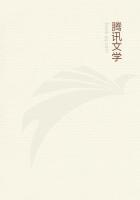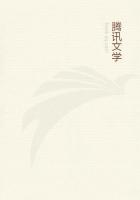By Octave Chanute.
I am asked to set forth the development of the "two-surface" type of flying machine which is now used with modifications by Wright Brothers, Farman, [1]Delagrange, Herring and others.
[1] Now dead.
This type originated with Mr. F. H. Wenham, who patented it in England in 1866 (No. 1571), taking out provisional papers only. In the abridgment of British patent Aeronautical Specifications (1893) it is described as follows:
"Two or more aeroplanes are arranged one above the other, and support a framework or car containing the motive power. The aeroplanes are made of silk or canvas stretched on a frame by wooden rods or steel ribs.
When manual power is employed the body is placed horizontally, and oars or propellers are actuated by the arms or legs.
"A start may be obtained by lowering the legs and running down hill or the machine may be started from a moving carriage. One or more screw propellers may be applied for propelling when steam power is employed.
On June 27, 1866, Mr. Wenham read before the "Aeronautical Society of Great Britain," then recently organized, the ablest paper ever presented to that society, and thereby breathed into it a spirit which has continued to this day. In this paper he described his observations of birds, discussed the laws governing flight as to the surfaces and power required both with wings and screws, and he then gave an account of his own experiments with models and with aeroplanes of sufficient size to carry the weight of a man.
Second Wenham Aeroplane.
His second aeroplane was sixteen feet from tip to tip.
A trussed spar at the bottom carried six superposed bands of thin holland fabric fifteen inches wide, connected with vertical webs of holland two feet apart, thus virtually giving a length of wing of ninety-six feet and one hundred and twenty square feet of supporting surface.
The man was placed horizontally on a base board beneath the spar. This apparatus when tried in the wind was found to be unmanageable by reason of the fluttering motions of the fabric, which was insufficiently stiffened with crinoline steel, but Mr. Wenham pointed out that this in no way invalidated the principle of the apparatus, which was to obtain large supporting surfaces without increasing unduly the leverage and consequent weight of spar required, by simply superposing the surfaces.
This principle is entirely sound and it is surprising that it is, to this day, not realized by those aviators who are hankering for monoplanes.
Experiments by Stringfellow.
The next man to test an apparatus with superposed surfaces was Mr. Stringfellow, who, becoming much impressed with Mr. Wenham's proposal, produced a largish model at the exhibition of the Aeronautical Society in 1868. It consisted of three superposed surfaces aggregating 28square feet and a tail of 8 square feet more.
The weight was under 12 pounds and it was driven by a central propeller actuated by a steam engine overestimated at one-third of a horsepower. It ran suspended to a wire on its trials but failed of free flight, in consequence of defective equilibrium. This apparatus has since been rebuilt and is now in the National Museum of the Smithsonian Institution at Washington.
Linfield's Unsuccessful Efforts.
In 1878 Mr. Linfield tested an apparatus in England consisting of a cigar-shaped car, to which was attached on each side frames five feet square, containing each twenty-five superposed planes of stretched and varnished linen eighteen inches wide, and only two inches apart, thus reminding one of a Spanish donkey with panniers.
The whole weighed two hundred and forty pounds. This was tested by being mounted on a flat car behind a locomotive going 40 miles an hour. When towed by a line fifteen feet long the apparatus rose only a little from the car and exhibited such unstable equilibrium that the experiment was not renewed. The lift was only about one-third of what it would have been had the planes been properly spaced, say their full width apart, instead of one-ninth as erroneously devised.
Renard's "Dirigible Parachute."
In 1889 Commandant Renard, the eminent superintendent of the French Aeronautical Department, exhibited at the Paris Exposition of that year, an apparatus experimented with some years before, which he termed a "dirigible parachute." It consisted of an oviform body to which were pivoted two upright slats carrying above the body nine long superposed flat blades spaced about one-third of their width apart. When this apparatus was properly set at an angle to the longitudinal axis of the body and dropped from a balloon, it travelled back against the wind for a considerable distance before alighting. The course could be varied by a rudder. No practical application seems to have been made of this device by the French War Department, but Mr. J. P.
Holland, the inventor of the submarine boat which bears his name, proposed in 1893 an arrangement of pivoted framework attached to the body of a flying machine which combines the principle of Commandant Renard with the curved blades experimented with by Mr. Phillips, now to be noticed, with the addition of lifting screws inserted among the blades.
Phillips Fails on Stability Problem.
In 1893 Mr. Horatio Phillips, of England, after some very interesting experiments with various wing sections, from which he deduced conclusions as to the shape of maximum lift, tested an apparatus resembling a Venetian blind which consisted of fifty wooden slats of peculiar shape, 22 feet long, one and a half inches wide, and two inches apart, set in ten vertical upright boards.
All this was carried upon a body provided with three wheels. It weighed 420 pounds and was driven at 40miles an hour on a wooden sidewalk by a steam engine of nine horsepower which actuated a two-bladed screw.















